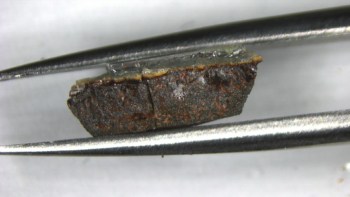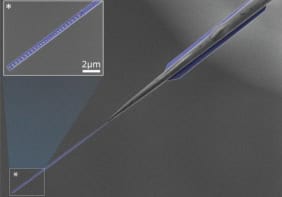Physicists in the US have made a chip-sized refrigerator that can cool objects much bigger than itself to millikelvin temperatures. The device relies on the quantum mechanical tunnelling of electrons between a metal and superconductor and could find applications in a variety of cryogenic sensors in the semiconductor industry and astronomy (A M Clark et al. 2005 Appl. Phys. Lett. 86 173508).

Many next-generation scientific instruments will rely on sensors cooled to temperatures near 100 millikelvin (mK). However, present-day solid-state refrigerators cannot go below about 1 K. Moreover, the cooling techniques that can reach 100 mK are complicated and expensive.
Now Joel Ullom and colleagues at the National Institute of Standards and Technology (NIST) in Boulder, Colorado, and the University of Notre Dame in Indiana have demonstrated a new approach to this problem. The chip-scale electron-tunnelling refrigerator consists of a stack of thin films: the bottom layer is a “normal” metal, the middle film an insulator and the top layer is a superconducting metal.
When a battery is connected across the stack, the hottest electrons in the metal layer tunnel through the insulator and into the superconductor. This tunnelling cools the normal metal and drains energy from the electrons and lattice vibrations in the object being cooled, which is not electrically connected to the refrigerator (see figure). “This is the same way that evaporation of the hottest molecules produces cooling in a ‘swamp’ air conditioner,” says Ullom.
The NIST team used four pairs of devices, each measuring 25 microns by 15 microns, to cool a 450 by 450 micron object from a temperature of 320 mK down to 225 mK. “By volume, it is as if a refrigerator the size of a person reached out and cooled the Statue of Liberty,” says Ullom.
The team says that a combination of inexpensive helium-3 refrigerators and improved electron-tunnelling devices could ultimately be capable of cooling centimetre-sized objects to 100 mK and below. Such a combination could then be used in a variety of cryogenic applications, including X-ray sensors for defect analysis in the semiconductor industry or photon detectors in a planned satellite mission to search for polarization in the cosmic microwave background.



